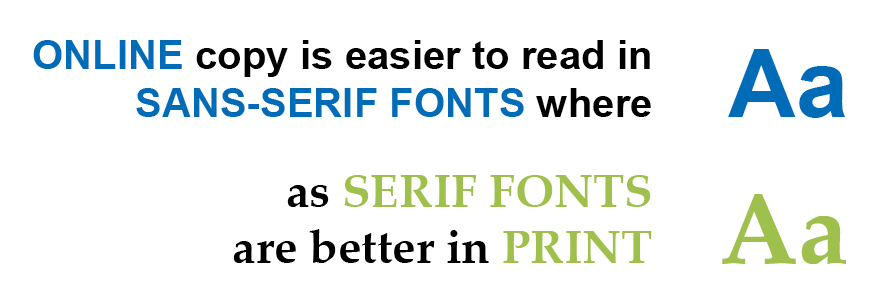If you want to know about how to write compelling website copy, then read on. Copywriting is one of the most essential elements of effective online marketing. The art of 'direct-response' copywriting involves strategically delivering words that get people to take some form of action.
You must:
1. understand your customer’s needs and concerns
2. have the ability to clearly communicate the benefits of your product/service
3. be able to close the sale.
4. keep your website copy fresh and updated
You may have a fantastic offer but you also have to communicate it to your audience in a way that appeals to them. And that’s where the art of good copywriting comes into play. Here are 6 simple tips for achieving effective copywriting.
Use a Compelling Headline.
This is what gets your copy read in the first place. No matter how great your copy is, if your headline is boring, it will not be read. Get creative!
Less is More
People read 25% slower online than offline, which means you need to write less copy to ensure they’ll read it. The quickest way to reduce your copy is by removing any unnecessary words like “that” or “to.”
Key Points Early
Keep your most important points at the beginning of paragraphs and lists.
Be Brief
Make sure your paragraphs are no more than 3 lines long otherwise you might lose your reader’s attention. Also vary your sentence length to help hold your reader’s attention.
Odd vs. Even
Odd numbers are easier to remember than even, so keep this in mind when writing lists (i.e., 3 tips, 5 ways to, etc.).
It’s Not all about Selling
Try to stick to the 3 to 4 ratio: for every 3 posts of valuable, free information, you can then post 1 sales pitch message.
Appeal to your audience on an Emotional level
• Grab their attention
• Hold interest
• Invoke desire (talk about benefits, give real examples, offer a solution to their problem)
• Cause action (make your readers do what you want them to do)
• On social media be more informal in your writing style
Consider Your Font Style
 Ensure your copy is easy to read by using sans-serif fonts, such as Arial, Verdana and Helvetica. It is the opposite to print where serif fonts are easy to read.
Ensure your copy is easy to read by using sans-serif fonts, such as Arial, Verdana and Helvetica. It is the opposite to print where serif fonts are easy to read.
Images vs. Text
Best practice is to use a ratio of 80% text to 20% images.
Most importantly, make sure you proof-read. Read it aloud and ask someone else to proof read your copy as a fresh pair of eyes can see things you missed.